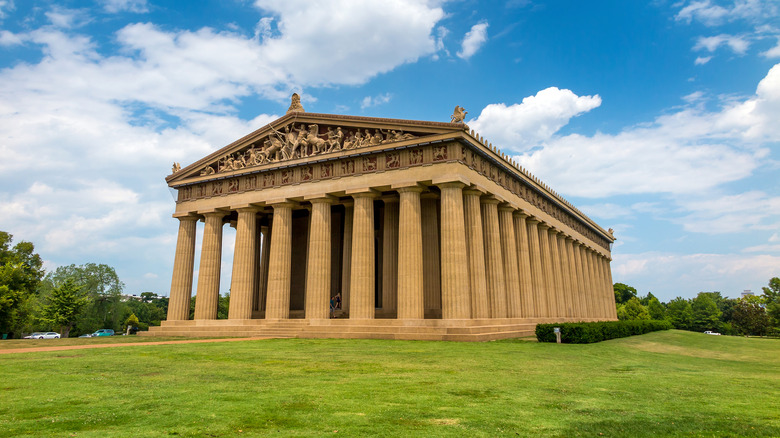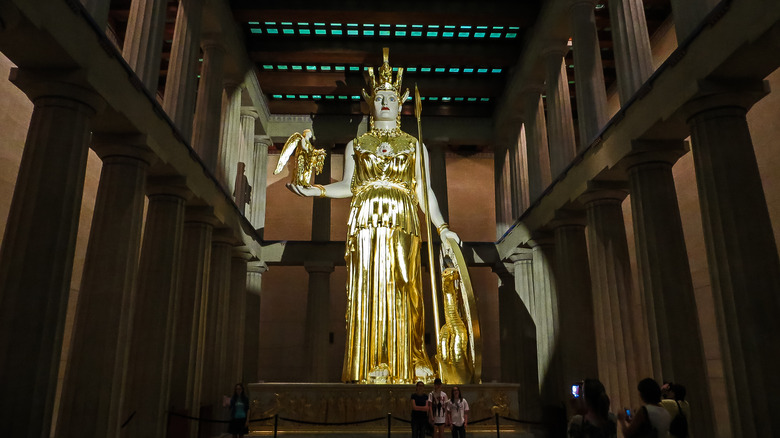How Accurate Is Nashville's Parthenon Replica?
The Parthenon of Athens is one of the most famous landmarks of Greece. The building was first constructed in 447 B.C. for worship of the city's patron goddess Athena (via Britannica). In its near 2,500-year history, the Parthenon subsequently evolved into the ancient Athenian treasury, a church under the Byzantine Empire, a mosque under the Ottoman Empire, and finally its current form as a museum and heritage site in modern Greece (via PBS).
Despite past and present preservation efforts, the building is a mere shell of what it once was, thanks in large part to its use by the Ottomans as a gunpowder depot. When a Venetian ship fired on the site in 1687, much of the relatively intact structure was blown apart. Yet, the remains inspired architecture across the world, especially in 1897 when the city of Nashville commissioned a full-scale replica for the Centennial Exposition (via Nashville Parthenon). Except for its lack of paint, which adorned many ancient buildings once thought to be left as bare marble, the Nashville Parthenon is a remarkably faithful reconstruction of its namesake.
The Nashville Parthenon was created with surprising attention to detail
The original building was not intended to be a permanent fixture (not unlike the Eiffel Tower). Its plaster, wood, and brick exterior was expected to and eventually did break down. Yet the attraction was received so well by the public (the exposition itself drew in millions of people) that the city chose to rebuild it in 1920. The new structure was made of concrete instead of marble, but the planners made sure to faithfully replicate the subtly bulged and nonlinear design of the original columns (via Artsy). Closest to its ancient counterpart are the replica Elgin Marbles ornamenting the building's exterior, which were cast directly from the originals housed in Britain (via The Culture Trip). Any missing details beyond this were recreated using past illustrations and educated guesses.
Within is a conventional art museum, but since 1990, visitors have been greeted by a reconstruction (pictured above) of the Greek Parthenon's long-lost statue of Athena. The original was gradually stripped of its gold before it disappeared, likely accidentally destroyed after being relocated to Constantinople (via World History Encyclopedia). The Nashville replica was brought to life using historical descriptions, ancient Roman copies for reference, and in 2002 real gold with which it was gilded (via The Tennessean).

